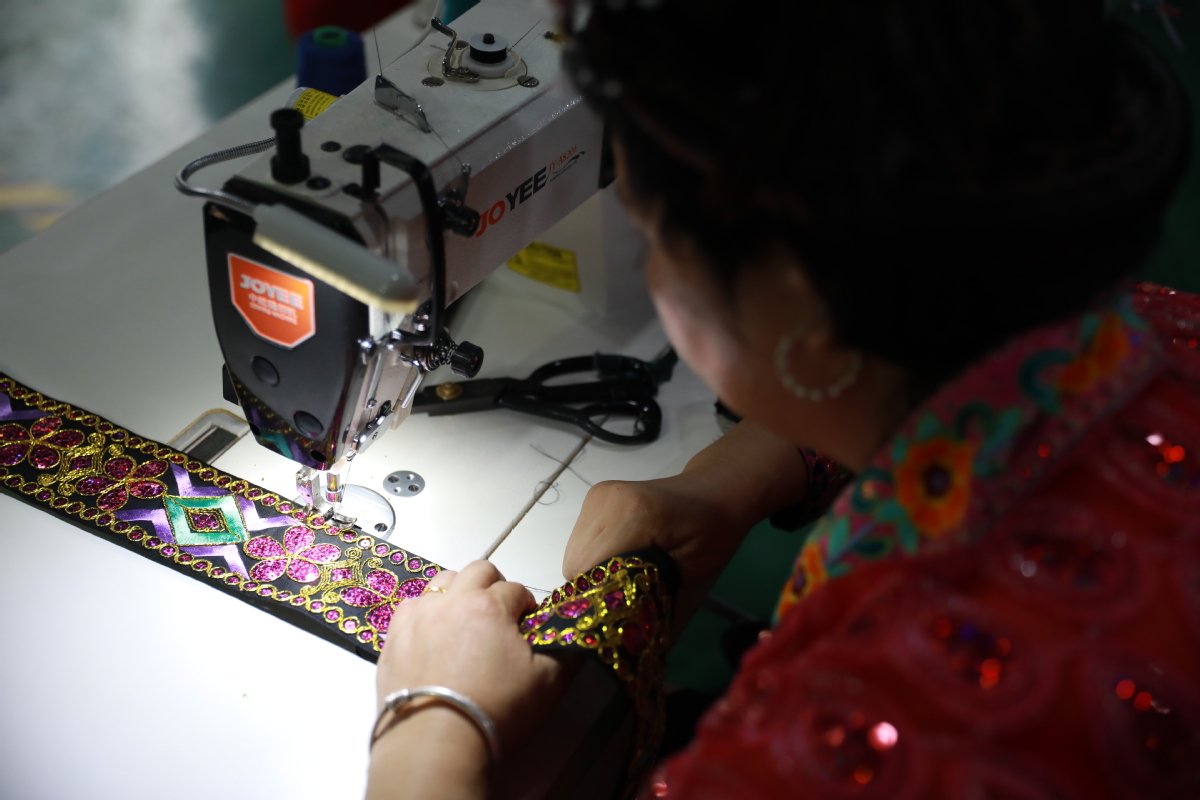Embroidery helps stitch handsome profits


Most villages are now equipped with fire trucks and the highway has been opened for traffic, which provides a road to prosperity for villagers and their products, including embroidered pieces of course.
With the support of the local government, Wei set up another embroidery factory at a community in Congjiang in March. A large number of villagers moved to flats in town from their rural homes, and they received professional training before landing jobs as embroiderers.
They live above the factory, thus making it convenient for them to look after children.
The 6,000-square-meter workshop has 26 large-scale embroidery machines and 120 sewing machines. It mainly produces traditional clothing, shoes and silver ornaments unique to the Miao ethnic group. The products are sold to Guizhou, Guangdong, the Guangxi Zhuang autonomous region and other areas.
The community factory is expected to achieve annual output value of 10 million yuan, and it plans to pay 240 female employees a combined 5.8 million yuan a year, Wei said.
Besides a brick-and-mortar store in Congjiang that sells finished embroidered pieces, the factory also sells its products online through messaging app WeChat and mobile video app Kuaishou.
The average age of the factory workers is 50, and their minimum wage is set at 1,800 yuan a month, Wei said.
"Women who come from Congjiang have attained a certain degree of mastery in craftsmanship since they have been doing it for many years," said Yang Liuzhen, president of the women's federation of Meie community, Congjiang, who is responsible for the management of Wei's factory.
"Most women would like to find a stable job as an embroider. We give them embroidery training for about a week before they become skillful enough to do the work," Yang said.
During the two sessions this year, what Wei cared about the most was how can younger generations better understand, inherit and develop national folk cultures.
"Embroidery skills and folk songs of Miao and Dong ethnic groups need promotion by experts and scholars. More importantly, the younger generation needs to inherit and innovate their culture. It is a long-term and arduous task as many young people do not pay attention to such things or are not that interested in traditional culture," Wei said.
Currently, China has nearly 9,500 companies engaged in making traditional folk costumes, with the number increasing steadily in recent years. More than 60 percent of the total are small and medium-sized enterprises, according to data from Tianyancha, a data company providing information on Chinese enterprises.
Guizhou has more than 2,100 related enterprises, accounting for the largest portion nationwide. Guizhou is followed by the Inner Mongolia autonomous region and Yunnan province.




































